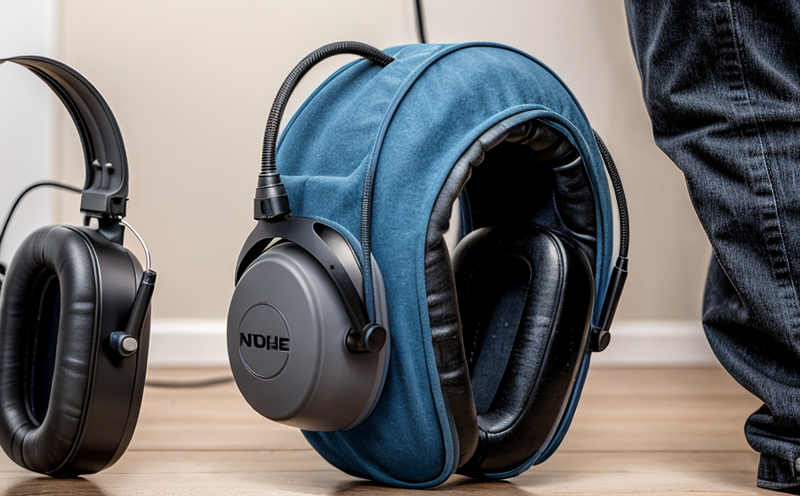EN ISO 4869-3 Hearing Protector Insertion Loss Testing
The CEN standard EN ISO 4869-3 provides a framework for the measurement of insertion loss (IL) in hearing protectors. This parameter is critical for ensuring that workers exposed to hazardous noise environments have adequate protection against auditory damage and occupational noise-induced hearing loss.
The insertion loss of a hearing protector is defined as the difference between the sound pressure level measured at the eardrum without any protection, and with the hearing protector in place. This standard specifies the methodology for accurate measurement under controlled conditions to ensure that all protective equipment performs consistently across different manufacturers and models.
Occupational safety professionals must rely on rigorous testing standards like EN ISO 4869-3 when selecting and validating hearing protectors for their workforces. The test involves a combination of sound pressure level measurements, the use of specific calibration procedures, and careful attention to environmental factors that can affect results.
To perform this test accurately, specialized equipment is required, including a high-quality sound source, a real-ear measurement device, and a reference microphone. The testing protocol ensures that the hearing protector is positioned correctly and that all relevant measurements are taken under standardized conditions.
Once tested, the results provide critical data for quality managers to ensure compliance with occupational health regulations. This information helps in making informed decisions about which protectors best suit the needs of individual workers based on their specific noise exposure levels.
| Applied Standards |
|---|
|
Applied Standards
The primary standard applied in this testing is EN ISO 4869-3:2017. This document outlines the procedures for measuring insertion loss, a key metric for evaluating hearing protection devices. It specifies the necessary equipment and conditions required to ensure accurate testing results.
Other relevant standards include EN ISO 11294 (acoustic impedance measurements) which complements these tests by providing additional information on ear-canal properties that can influence sound attenuation, as well as EN ISO 389-7:2020 for the specification of ear inserts.
The consistent application of these standards across testing laboratories ensures comparability and reliability of results. Compliance with these international norms is essential to maintain high safety standards in workplace environments.
Industry Applications
EN ISO 4869-3 hearing protector insertion loss testing is primarily used by industries where noise levels are a significant occupational hazard, including manufacturing, construction, mining, and aerospace. In these sectors, workers frequently encounter high decibel environments that can lead to permanent auditory damage over time.
Testing ensures that the selected protectors meet or exceed specified IL requirements set forth in national and international regulations such as OSHA 1926.035 (United States) and EU Directive 89/656/EEC. Quality managers rely on these tests to confirm that the hearing protection provided is effective and reliable, thereby protecting their workforce from noise-induced hearing loss.
Testing laboratories also play a crucial role in R&D by validating new designs of earplugs and earmuffs before they are introduced into manufacturing processes. This ensures that innovations do not compromise safety standards while enhancing comfort and effectiveness for users.
Environmental and Sustainability Contributions
- Reduces noise pollution in the workplace, contributing to better air quality and reducing stress levels among employees.
- Promotes sustainable practices by ensuring that workers are equipped with appropriate protection against harmful noises, thereby preventing health issues that could lead to higher absenteeism rates or increased healthcare costs.
- Supports circular economy principles through efficient material utilization in the development of protective devices.
By adhering strictly to EN ISO 4869-3 and similar standards, laboratories contribute positively towards creating safer and more sustainable workplaces. These efforts align with broader global sustainability goals aimed at improving public health and environmental welfare.





